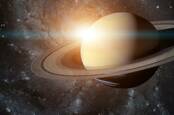This article is more than 1 year old
Boffins discover new dust clouds in the Solar System, Mercury has a surprisingly filthy ring
Venus also turns up a number of undiscovered orbital partners
Scientists have spotted, for the first time, gigantic dust rings circling the Sun alongside the orbits of Mercury and Venus.
The Solar System is nothing but our star, a few planets, some satellites, lots of little rocks, and a load of dust. As asteroids collide and comets burn up, leftover crumbs are scattered around space, and these particles get sucked into the orbits of planets to form dust clouds – Earth’s even got its own debris zone. Boffins hadn't expected to see one along Mercury's orbital path, though.
“People thought that Mercury, unlike Earth or Venus, is too small and too close to the Sun to capture a dust ring,” said Russell Howard, an astrophysicist working for the US Naval Research Laboratory. “They expected that the solar wind and magnetic forces from the Sun would blow any excess dust at Mercury’s orbit away.”
Instead, Mercury is surrounded by a blanket of dust stretching 9.3 million miles wide. Despite the ring's size, it wasn’t something scientists have studied much before. Although solar spacecrafts like the pair STEREO-A and STEREO-B and NASA’s Parker Solar Probe have detected dust, it’s generally ignored by scientists.
“The dust close to the Sun just shows up in our observations, and generally, we have thrown it away,” said Howard. “All around the Sun, regardless of the spacecraft’s position, we could see the same five percent increase in dust brightness, or density. That said something was there, and it’s something that extends all around the Sun.”
The results of the Mercury dust study were published this week in The Astrophysical Journal.
Venus has a few surprise lumps in her ring
Meanwhile, in a separate study, Petr Pokorny and Marc Kuchner, both research scientists working at NASA’s Goddard Space Flight Center, found the source of Venus’ dust ring: A family of asteroids that have never been seen before.

Friday fun fact: If Stegosauruses had space telescopes, they wouldn't have seen any rings around Saturn
READ MORESimulations showed that it's plausible that about 10,000 asteroids once orbited around Venus 4.5 billion years ago, but over time the constant jostling destroyed the population and only about 8 per cent (800 asteroids) have survived to the present day. The research has been published in The Astrophysical Journal.
Venus’ ring is larger since its orbit is wider. The massive ring stretches about 16 million miles wide and is about 6 million miles thick.
It can be hard to spot, however, since it’s only 10 per cent denser than the normal dust levels in space. To put that into context, if the dust grains are all packed together, it would only create an asteroid about two miles across.
The next step is trying to observe these speculated group of asteroids. “I think the most exciting thing about this result is it suggests a new population of asteroids that probably holds clues to how the solar system formed,” Kuchner said. “If there’s something there, we should be able to find it,” Pokorny added. ®
